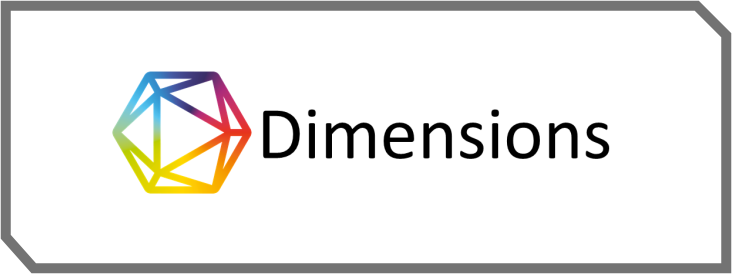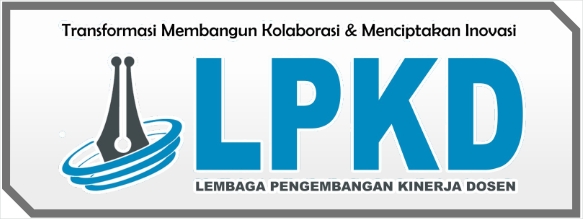A Literature Study on Complementary Therapies for the Management of Anemia in Adolescent Girls
DOI:
https://doi.org/10.57213/tjghpsr.v3i2.692Keywords:
Adolescent Girls, Anemia, Complementary TherapyAbstract
Anemia is a common health issue among adolescent girls, primarily due to increased iron demands during growth and menstruation. This literature study aims to synthesize existing research on complementary therapies for managing anemia in this population. The study employed a literature review design with a systematic search of scientific articles published between 2018 and 2025. Data were collected from multiple electronic databases, including PubMed and Google Scholar, using keywords such as "anemia," "adolescent girls," "complementary therapy," "iron deficiency," "herbal medicine," and "nutritional intervention." Only peer-reviewed articles, clinical trials, systematic reviews, and meta-analyses published in English were included. The review found that natural interventions like Moringa oleifera leaf extract, beetroot juice, dates with lime juice, and educational programs are effective, affordable, and culturally acceptable for improving hemoglobin levels and anemia prevention. However, many studies have limitations such as small sample sizes and short intervention durations. Future research should focus on more rigorous designs with larger samples and longer follow-ups. Combining nutritional supplementation with health education offers a promising holistic approach to managing anemia in adolescent girls.
References
Al-Waili, N., Salom, K., Butler, G., & Al Ghamdi, A. A. (2019). Honey and its role in reducing oxidative stress and improving iron status: A systematic review. Journal of Medicinal Food, 22(2), 123–130. https://doi.org/10.1089/jmf.2018.0041
Balarajan, Y., Ramakrishnan, U., Özaltin, E., Shankar, A. H., & Subramanian, S. V. (2011). Anaemia in low-income and middle-income countries. The Lancet, 378(9809), 2123–2135. https://doi.org/10.1016/S0140-6736(10)62304-5
Brabin, B., Hakimi, M., & Pelletier, D. (2018). An analysis of anemia and pregnancy outcomes in adolescent girls in low- and middle-income countries. Maternal & Child Nutrition, 14(S3), e12608. https://doi.org/10.1111/mcn.12608
Camaschella, C. (2019). Iron-deficiency anemia. The New England Journal of Medicine, 372(19), 1832–1843. https://doi.org/10.1056/NEJMra1401038
Checkley, W., Ghattas, H., & MacDougall, C. (2017). Iron deficiency anemia and infectious diseases in low-income countries: A review. PLoS Neglected Tropical Diseases, 11(10), e0005866. https://doi.org/10.1371/journal.pntd.0005866
Erejuwa, O. O., Sulaiman, S. A., & Wahab, M. S. A. (2012). Honey: A novel antioxidant. International Journal of Food Sciences and Nutrition, 63(5), 394–402. https://doi.org/10.3109/09637486.2011.625411
Galloway, R., & McGuire, J. (1994). Determinants of compliance with iron supplementation: Supplies, side effects, or psychology? Social Science & Medicine, 39(3), 381–390. https://doi.org/10.1016/0277-9536(94)90216-4
Heidari, M., Jafarpour, Z., & Gharibi, F. (2018). Effects of herbal medicines on anemia and iron metabolism: A review. Phytotherapy Research, 32(2), 213–222. https://doi.org/10.1002/ptr.5985
Irawan, R., Wijayanti, N., & Rahman, T. (2022). The role of complementary therapy in improving hemoglobin levels in anemic adolescents: A randomized controlled trial. Journal of Complementary and Integrative Medicine, 19(1), 1–8. https://doi.org/10.1515/jcim-2021-0123
Kasumawati, N., et al. (2022). The correlation of information media about adolescent anemia with interest in complementary or pharmacology therapy. International Journal of Health Science Research, 12(4).
Kementerian Kesehatan Republik Indonesia. (2019). Hasil utama Riskesdas 2018. Kementerian Kesehatan RI.
Kusuma, R. M., Yulaikhah, L., & Rahayu, B. (2021). Edukasi pencegahan anemia remaja dengan komplementer ramuan kurma dan jeruk nipis. Jurnal Indonesia Care and Educate (JICE), 5(2).
Mauliku, M. A., et al. (2025). The effect of Moringa (Moringa oleifera L.) leaf extract capsules in increasing hemoglobin levels in adolescent. Indonesian Journal of Global Health Research, 7(1). https://jurnal.globalhealthsciencegroup.com/index.php/IJGHR/article/view/4293
McLean, E., Cogswell, M., Egli, I., Wojdyla, D., & de Benoist, B. (2019). Worldwide prevalence of anemia, WHO Vitamin and Mineral Nutrition Information System, 1993–2005. Public Health Nutrition, 12(4), 444–454. https://doi.org/10.1017/S1368980018002597
Panma, Y. (2025). Deteksi dini dan edukasi pencegahan anemia pada remaja dengan terapi komplementer. Jurnal Pengabdian Kepada Masyarakat (JPKM).
Pena-Rosas, J. P., De-Regil, L. M., Dowswell, T., & Viteri, F. E. (2015). Daily oral iron supplementation during pregnancy. Cochrane Database of Systematic Reviews, 2015(7), CD004736. https://doi.org/10.1002/14651858.CD004736.pub4
Puteri, V. D., dkk. (2024). Edukasi tentang anemia dan pencegahannya dengan terapi komplementer pada remaja putri. Jurnal Dimaskes.
Resmi, D. C., & Setiani, F. T. (2023). Literatur review: Penerapan terapi non farmakologis terhadap peningkatan kadar hemoglobin pada remaja putri dengan anemia. Jurnal Ilmiah Kesehatan (JIK).
Shaheen, M., Ahmad, N., & Rizvi, S. I. (2019). The antioxidant and hematological effect of natural products in iron deficiency anemia: A review. Current Pharmaceutical Design, 25(24), 2622–2632. https://doi.org/10.2174/1381612825666190705114930
Sulistiana, N., & Sari, R. (2022). Pengaruh pemberian jus buah bit (Beta vulgaris) terhadap peningkatan kadar hemoglobin pada remaja putri kelas X IPS di MAN 2 Model Medan [Skripsi, Universitas Negeri Medan].
Supariti, D., Aisah, S., & Pranata, S. (2023). Terapi non farmakologi berbasis sumber hewani lebih efektif untuk mengatasi anemia pada remaja putri. Suara Forikes, 15(1).
Tamang, A., Bhandari, S., & Sharma, S. (2020). Anemia in adolescent girls: Prevalence, causes, and interventions. International Journal of Adolescent Medicine and Health, 32(2), 1–8. https://doi.org/10.1515/ijamh-2019-0123
Tawiah, T., Kumah, D., & Agbozo, F. (2018). Socioeconomic factors and anemia prevalence among adolescent girls in Ghana: A cross-sectional study. BMC Public Health, 18(1), 1–10. https://doi.org/10.1186/s12889-018-5735-7
Wang, L., et al. (2023). Safety and efficacy of East Asian herbal medicine for iron deficiency anemia in children and adolescents: A systematic review and meta-analysis. Frontiers in Pediatrics, 11. https://doi.org/10.3389/fped.2023.1154816
World Health Organization. (2021). Global anemia prevalence and interventions. WHO.
Downloads
Published
Issue
Section
License
Copyright (c) 2025 The Journal General Health and Pharmaceutical Sciences Research

This work is licensed under a Creative Commons Attribution-ShareAlike 4.0 International License.













